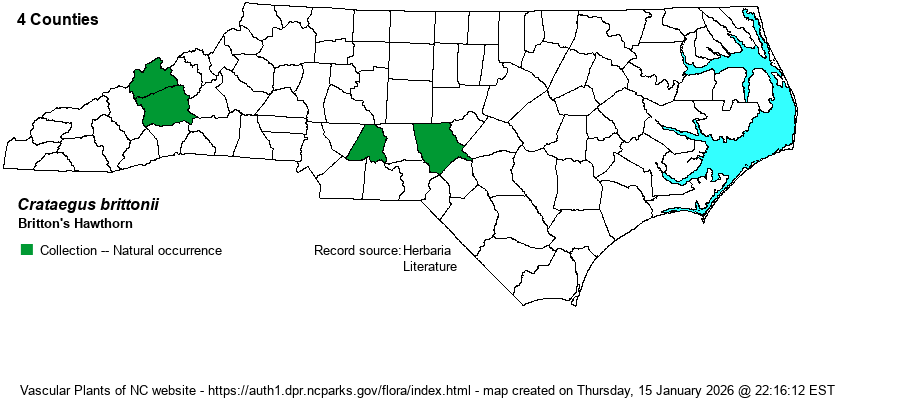| Author | Eggleston | |
| Distribution | Occurs primarily in the southern Mountains, and sporadically as far east as the southeastern Piedmont (apparently). Weakley (2018) has it occurring in the Mountains and Piedmont, but not in the Coastal Plain. Range in NC is very poorly known, and the map below is so incomplete as to be "non-functional" at the present time.
A small range from central NC west perhaps to eastern TN, and south sparingly to SC and GA, and disjunct in AL (based on range map in Lance 2014).
| |
| Abundance | Perhaps not rare, but not well known. Might best be called uncommon or very infrequent in the southern Mountains and rare farther east. Weakley's (2018) map shows it as "uncommon" in both the mountains and the Piedmont. Based on such sparse data, the website editors have given it a state rank of S3? for the present time. | |
| Habitat | This is a species of dry upland and somewhat open sites, such as bluffs, rocky outcrops, dry wooded margins, and dry thickets. |
| Phenology | Blooms in April and May, and fruits in September and October. | |
| Identification | This is a tall shrub to small tree, rather similar in characters to C. uniflora, with which it is related. The leaves are almost rhombic in shape to widely elliptic -– widest at the middle, with noticeable but blunt teeth on the outer two-thirds of the leaf. Unlike C. uniflora, which usually has single flowers, this species has 1-5 flowers in a leaf axil. Like that species, the thorns are very slender (about 1 mm in width). See Lance (2014) and Weakley (2018) for additional separation characters. But, if you see a hawthorn with only 1-2 flowers or pomes in a given axil, it may well be either this species or the much more common C. uniflora. | |
| Taxonomic Comments | As mentioned above, this taxon is very closely related to One-flowered Hawthorn (C. uniflora), and Lance (2014) simply has it as C. uniflora var. brittonii. Weakley (2018) does have it split as a species, however. This taxon was not mentioned in older references such as RAB (1968), being subsumed within C. uniflora.
| |
| Other Common Name(s) | None | |
| State Rank | [S3?] | |
| Global Rank | GNR | |
| State Status | | |
| US Status | | |
| USACE-agcp | | |
| USACE-emp | | |

